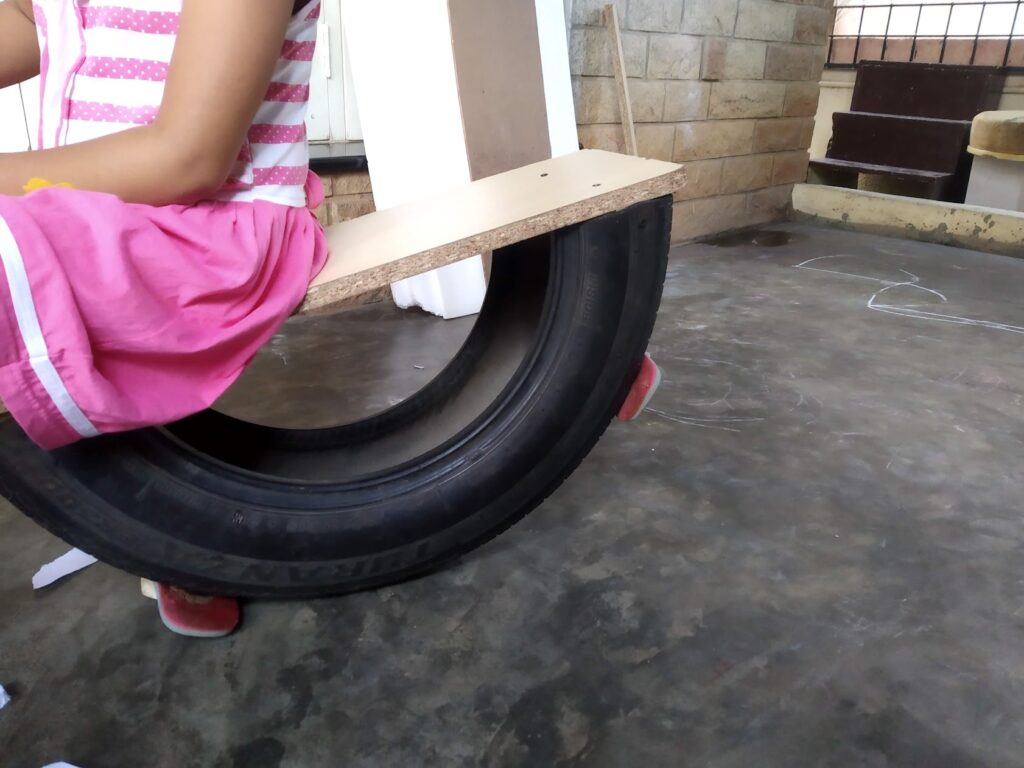Open Learning is all about multiple explorations. Learning stems from the joyful explorations not from a parent’s agenda to make child learn. Explore how parents can expand the horizon of exploration.
The present world revolves around algorithms. In the connected world of devices and lifestyle, everything is based on sophisticated algorithms around your likes/ dislikes. We are shown more and more of what we clicked even once. Intermittently, we are also shown what we may not have thought for some time. One day, I mistakenly clicked on a Paneer recipe, something I never eat. Now, my social media is overflowing with paneer gravy suggestions. Suddenly, I saw a few recommendations for poetry or embroidery that I would have clicked long back.

How do they keep track of every click, likes, and dislikes? This way, the social media algorithm keeps me engaged for hours and hours. The algorithm doesn’t care whether I genuinely pursue a suggestion further or simply spend time on an option before moving on. Its job is to increase the surface area of my choices, thus keeping me engaged for longer periods.
An idea struck me: what if we keep exposing children (through an algorithm) to things they like, while occasionally introducing options they might not have considered? In my open learning journey, I have realized that a lot of stress arises from the gap between expectations and execution.

As a parent, my expectations in the open learning environment are –
- My child should learn
- The day plan should be followed
- The learning should be documented.
- He should utilize his day
- and many more
Do you see a glaring problem in all the above expectations? Every expectation has a word “SHOULD”. The gap between expectation and execution is already big enough to be bridged by any child. Do algorithms work on “Shoulds”? I guess not. Instead, it constantly tries to alter my options to my liking so I start picking some of the choices thrown at me.
The second problem with these expectations is they restrict the child to a narrow territory in the name of choices. When presented with limited choices, children may lose focus and we might misinterpret this as a lack of interest or ability to learn. Our anxieties take hold, and we connect every choice to our child’s future, limiting their present exploration. Now, our expectations are not just about present activity but they also get attached to past and future problems. Instead of expanding the choices for children, we expanded our expectations and anxiety. It becomes a vicious cycle.
Let’s explore ways to expand the horizon of exploration for children –
- Exploration without the objective of learning-

True exploration cannot be disguised with the hidden goal of mandatory learning. Let’s treat exploration as expanding the horizon for the fun of it. Learning is not the primary objective of exploration. Columbus did not set for his travel with the idea of searching America. America was a happy accident of an exploration. Learning happens in many ways and not necessarily as an outcome.
- Exploration without boundaries –
Let exploration happen in as many ways as possible. It can be people, various jobs, play, experiments, doing nothing, places, sports/games, etc. To provide an environment of limitless explorations think in terms of Multiple Intelligence (Check this to know more about Multiple Intelligence)
- Mistakes are new findings –

Open learning does not happen in a rigid structure-based environment. Does my environment treat mistakes as new findings? Children thrive on the freedom to explore without worrying about mistakes. For optimal exploration, consider waiting to point out mistakes until later.
- Embrace “Maybe” Instead of “Should”-
Open learning is about exploration. It is okay if your child does not complete a planned activity every day. Maybe they will discover something even more valuable along the way. It is not about ticking the boxes. Open learning fosters a love for exploration and gaining varied experiences.
- The sparkle of surprise –
The way social media algorithm throws a few surprises here and there on our timeline feed, one can think of adding a surprise element to our children’s routine. This may help children to take a different path or may spark a new thought. The surprise can be in various forms like – adding constraints, creating funny manifestos for the day, some unusual act, etc.
- Capturing the journey –

The sheer joy of open learning compounds if the journey is captured in various styles like – journals, videos, interviews, role plays, photo albums, models, etc. The purpose of documentation is to capture the exploration rather than keeping the record. Remember, open learning is a journey of exploration that cannot be completed in a day, a week, or a year. It’s an ongoing process.
Let’s co-create that environment that hooks parents and children alike towards exposure. Learning is a bonus. A single tangible outcome cannot compensate for the sheer joy of exploration. Think about the long train journey we parents had as children. The joy of getting down at every station, knowing what delicacy is provided at every station, finding our way to our coach, exploring new magazines/books at the bookstore, having fun with co-passengers, and sharing food with others are the things we remember even now, not the destination of each journey. That is what any exploration does. It brightens the eyes of the explorer.
